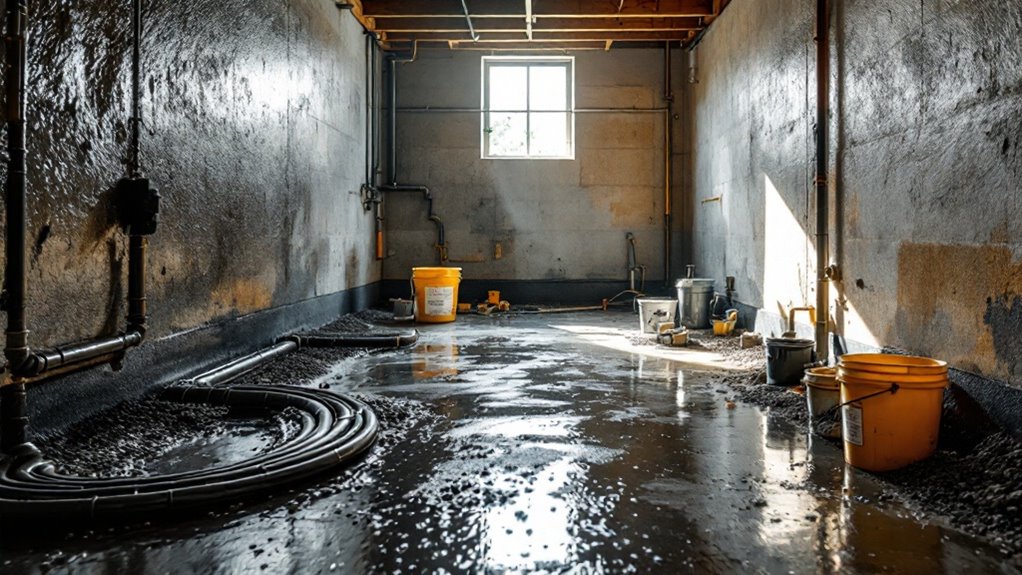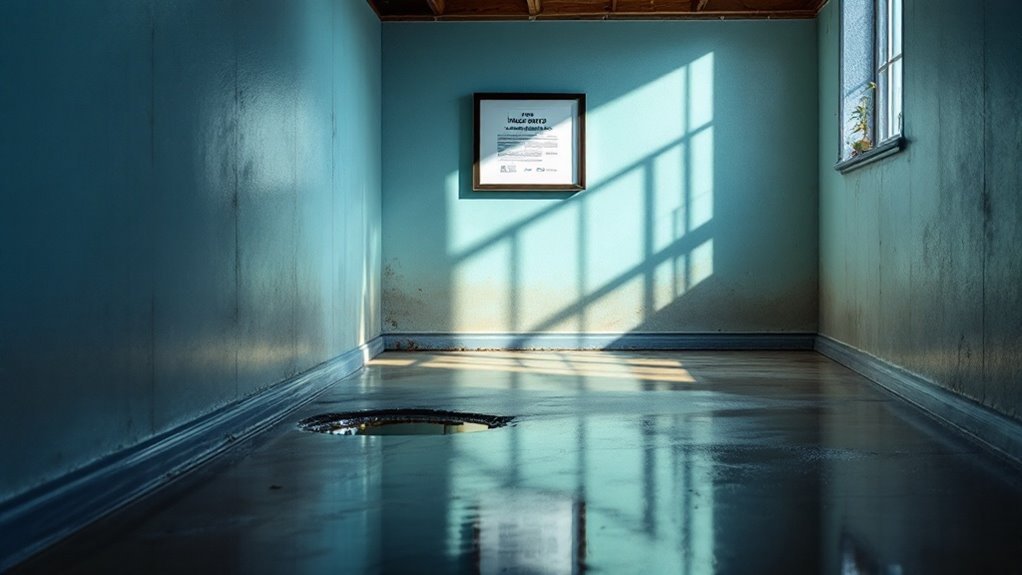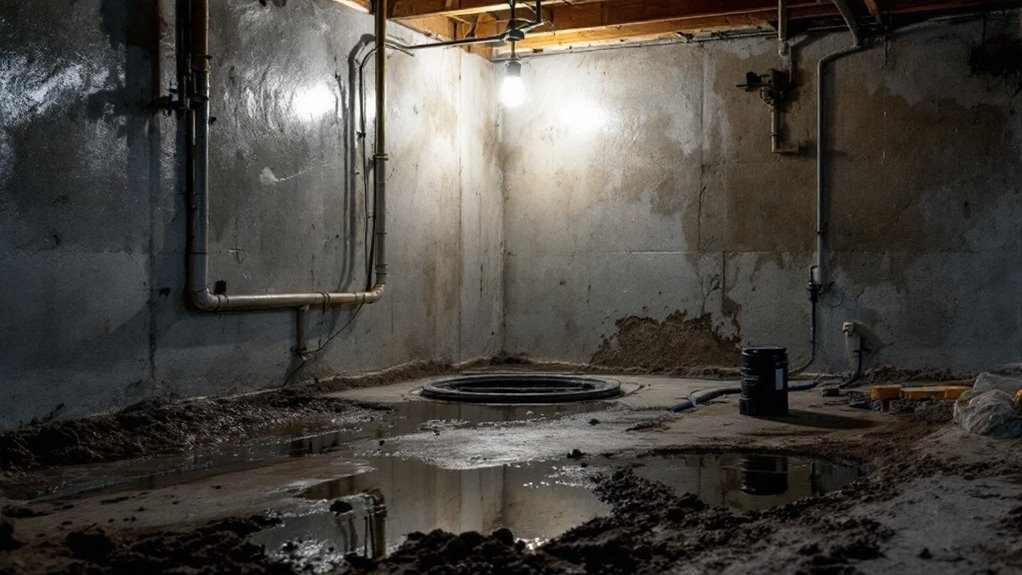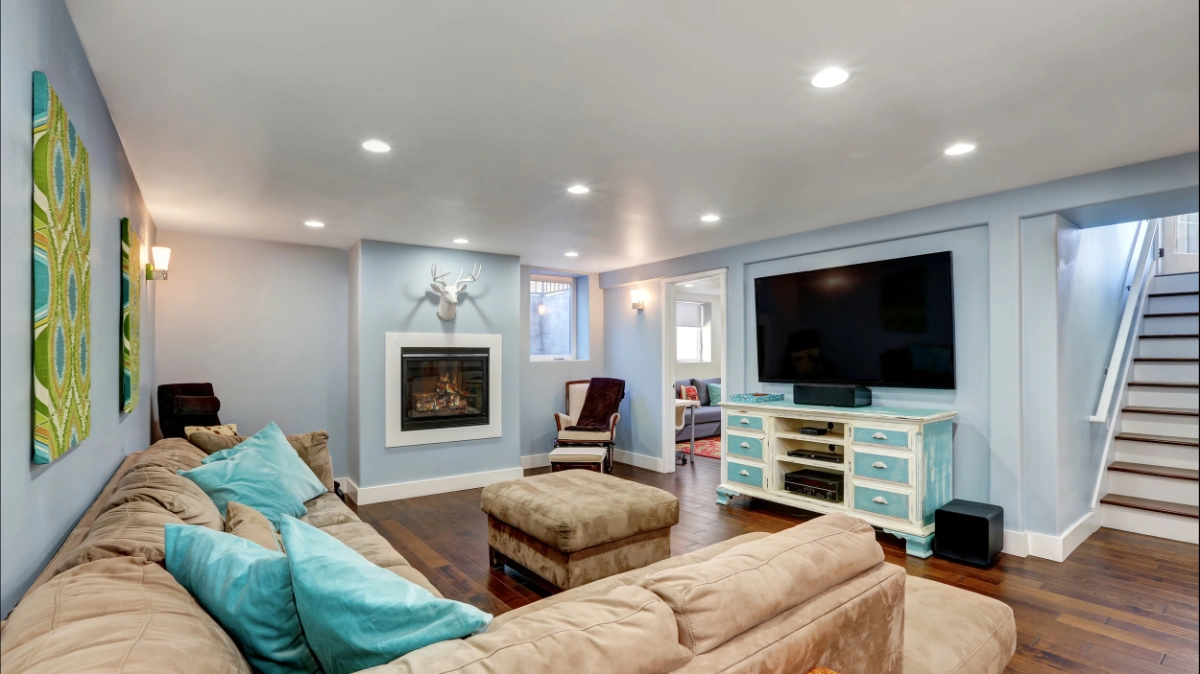Homeowners’ insurance typically doesn’t cover basement waterproofing. Policies focus on sudden water damage incidents like burst pipes, while preventive measures like waterproofing are excluded.
This means any costs for waterproofing efforts likely won’t be reimbursed. The coverage gaps can lead to significant out-of-pocket expenses if water damage occurs. Understanding your policy’s exclusions and the role of additional endorsements is essential for adequate protection against potential risks.
There’s more to uncover about your options and coverage.
Key Takeaways
- Homeowners insurance typically does not cover the costs of preventive basement waterproofing measures.
- Coverage is generally limited to sudden incidents, like plumbing failures, not maintenance-related issues.
- Insurance policies often exclude reimbursement for mold damage unless caused by a covered peril.
- Waterproofing costs can be significant, and homeowners may face high repair bills for water damage.
- Understanding policy exclusions is crucial for effective risk management and protecting your home.
Understanding Homeowners Insurance Coverage for Water Damage

When it comes to homeowners insurance, understanding coverage for water damage is essential, especially since not all incidents are treated equally.
Standard policies typically cover sudden plumbing failures, appliance overflows, and water damage from fire suppression systems. However, sewer backups and flood-related damage often require separate endorsements or policies.
Standard homeowners insurance covers sudden plumbing issues and appliance overflows but often excludes sewer backups and flood damage.
Negligence, such as failing to maintain systems, can lead to denied claims. Additionally, gradual water damage is usually excluded.
To enhance your coverage, consider optional endorsements for sewer backups or flood insurance if you’re in a high-risk area. Regular maintenance and documentation can further protect your interests.
What Basement Waterproofing Entails

Basement waterproofing involves a series of strategic steps designed to prevent water infiltration and protect your home’s foundation.
You’ll want to follow specific procedures to guarantee effectiveness:
- Cleaning: Remove debris and contaminants from surfaces.
- Applying Sealant: Use a waterproof sealant on walls and floors.
- Excavating Perimeter: Dig around the foundation to access potential entry points.
- Installing Drain Tile: Place drain tiles to redirect water away from the foundation.
- Backfilling: Fill the excavated areas with gravel to enhance drainage.
These steps work together to create a dry, secure environment within your basement, safeguarding your property. Additionally, hiring professionals ensures that you utilize advanced techniques that yield long-lasting results.
Coverage for Sudden Incidents vs. Maintenance Issues

Understanding the distinction between sudden incidents and maintenance issues is vital for homeowners seeking adequate insurance coverage. Sudden water damage, like burst pipes, is typically covered, while maintenance-related problems, such as hydrostatic pressure or foundation cracks, usually aren’t. Here’s a quick comparison to clarify:
| Type of Incident | Coverage Status | Examples |
|---|---|---|
| Sudden Water Damage | Generally Covered | Burst pipes, appliance overflows |
| Maintenance Issues | Usually Excluded | Hydrostatic pressure, foundation cracks |
| Sump Pump Failures | Depends on Endorsement | Without endorsement, not covered |
Exclusions in Standard Homeowners Insurance Policies
In standard homeowners insurance policies, groundwater damage is typically excluded, leaving you vulnerable to issues like basement flooding.
This exclusion underscores the necessity of purchasing separate flood insurance, especially if you live in flood-prone areas.
Understanding these limitations can help you make informed decisions about your coverage and protect your property effectively.
Basement Warning Signs?
Cracks, leaks, or musty smells could signal serious water damage ahead. Act now before minor issues become costly repairs.
- Class-A Licensed & Insured
- Full-Service Construction
- Trusted Local Family-Owned
Exclusion of Groundwater Damage
When homeowners rely on standard insurance policies, they often overlook critical exclusions, particularly regarding groundwater damage.
Understanding these exclusions can save you from unexpected expenses:
- Groundwater damage is excluded unless caused by a sudden event, like a burst pipe.
- Standing water from rainfall isn’t covered unless linked to a covered peril.
- Damage from external floods requires separate flood insurance.
- Gradual water damage from poor maintenance is considered negligence and excluded.
- Sump pump failures are excluded without a special endorsement.
Being aware of these exclusions helps you make informed decisions about your coverage needs.
Flood Insurance Necessity
Since standard homeowners insurance policies typically exclude flood-related damage, obtaining separate flood insurance becomes essential for homeowners, particularly those in high-risk areas.
If your property is in a designated flood zone, lenders may require this insurance as a loan condition, especially for government-backed mortgages. Flood maps determine your eligibility for mandatory coverage, and without it, you risk facing significant financial losses from flood damage.
Standard policies don’t cover water damage from floods, leaving you responsible for costly repairs. Investing in flood insurance not only protects your property but also guarantees quicker recovery in case of an unexpected flood event.
The Role of Endorsements and Additional Coverage
Understanding the role of endorsements and additional coverage in homeowners insurance can greatly enhance your protection against water damage in your basement.
Enhancing your homeowners insurance with endorsements can significantly boost your protection against basement water damage.
These options tailor your policy to better suit your needs, ensuring you’re covered in specific scenarios. Consider the following:
- Sump Pump Coverage: Protects against pump failure.
- Water Backup Coverage: Covers sewer or drain backups.
- Flood Endorsements: Offers additional flood protection.
- Extended Replacement Cost: Increases your coverage limit.
- Mold Coverage: Addresses mold damage from water issues.
Financial Implications of Waterproofing and Insurance Gaps
Understanding the financial implications of waterproofing and insurance gaps is essential for homeowners.
Most insurance policies exclude preventive waterproofing measures, leaving you to pay out-of-pocket for these necessary improvements.
Coupled with the high costs of repairs from water damage not covered by insurance, the financial burden can be significant.
Insurance Coverage Limitations
Many homeowners underestimate the financial implications of insurance coverage limitations when it comes to basement waterproofing. Your policy mightn’t cover essential preventive measures, leaving you vulnerable to significant costs.
Key exclusions include:
- Coverage denial for preemptive waterproofing efforts.
- Denial of gradual damage from water seepage.
- No reimbursement for mold unless caused by sudden events.
- Exclusion of groundwater infiltration without flood insurance.
- Lack of coverage for maintenance-related issues.
Understanding these limitations guarantees you’re better prepared for potential out-of-pocket expenses, emphasizing the importance of proactive planning beyond standard homeowners insurance policies.
Waterproofing Cost Considerations
When considering basement waterproofing, it’s important to weigh the financial implications alongside potential insurance gaps.
Costs vary greatly based on factors like basement size, geographic location, and the severity of water sources. For instance, interior methods average around $3,000, while exterior solutions can reach $7,000 or more.
Labor costs also add up, typically around $200 per hour. If your foundation needs repairs prior to waterproofing, expenses can escalate quickly.
Understanding these costs helps you evaluate whether your homeowners insurance might cover any gaps, ensuring that you’re prepared for both immediate expenses and long-term protection.
Final thoughts on insurance coverage for basement waterproofing
In the world of homeowners insurance, understanding what’s covered can save you headaches down the line.
Remember, “an ounce of prevention is worth a pound of cure.” While your policy might protect against sudden water damage, it typically won’t cover basement waterproofing as a maintenance issue. To safeguard your investment, consider discussing endorsements or additional coverage with your insurer.
Being proactive today can help you avoid costly repairs tomorrow.





